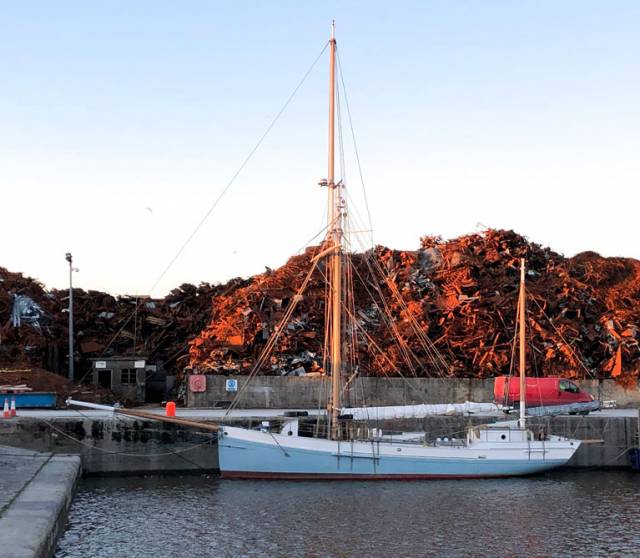Down Limerick way, somebody is probably already putting together an appropriate song about how the historic sail trading ketch Ilen was saved from the scrapyard through a heroic decade-long restoration programme by Limerick’s Ilen Project, only to spend her first winter in twenty years back in commission sharing quaysides with ever-changing mini-mountains of scrap metal writes W M Nixon.
Certainly, if the activity of the scrap metal trade from Limerick’s Ted Russell Dock is any indication of the good health of the metal-bashing trade in the Shannon-side city, then there’s no doubt that it’s thriving. And as the Dock is a capacious and clear space at weekends because of the high level of respect for the traditional Ship Owner’s First Commandment: “Though Shalt Not be in Port on Sundays”, then when Ilen’s crew avail of the briefly ship-free space for manoeuvring training, it’s invariably done against yet another new mountains of metallic bits and pieces which one day might be eligible for the Turner Prize.
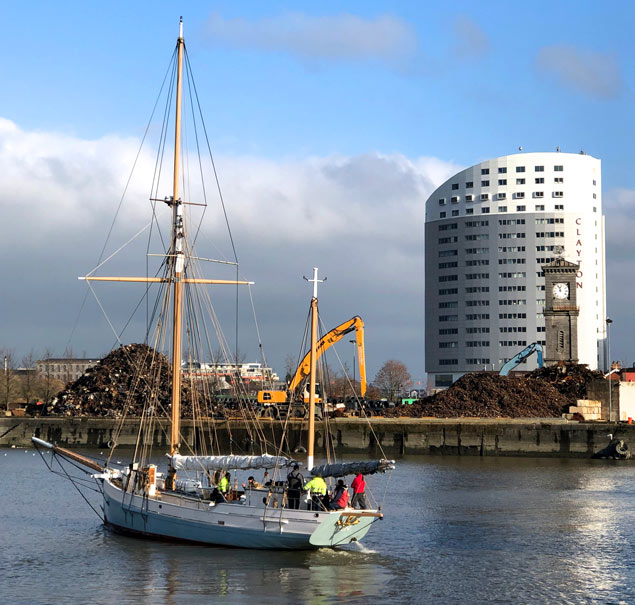 There’s plenty of space for Ilen’s manoeuvring training as she heads down the dock with the Clayton Hotel beyond, as the First Commandment of successful cargo ship management is: “Thou Shalt Not Be In Port On Sunday”. Photo: Gary MacMahon
There’s plenty of space for Ilen’s manoeuvring training as she heads down the dock with the Clayton Hotel beyond, as the First Commandment of successful cargo ship management is: “Thou Shalt Not Be In Port On Sunday”. Photo: Gary MacMahon
Beauty is in the eye of the beholder, so perhaps in addition to an Ilen Development Gallery from this winter’s activities, we’ll find a range of photos chronicling those ever-changing hills and mountains of metal offcuts. Stranger things have happened.
But certainly, those who are involved with the Ilen these days have developed a certain fondness for them, as they’ll forever be associated in their memories of a time when the Ilen ideal was being achieved.
In recent weeks, skilled joinery worker, boatbuilder and instructor Jim McInerney of the Ilen School has overseen the finishing of the furnishings in the pilot house, and very well they look too, an attractive combination of traditional quality woodwork providing a framework for the installation of electronic and other equipment, all of which is itself beautiful in its own way.
 The new finish in Ilen’s Pilot House (above and below) is an attractive mixture of classic marine joinery work and modern electronics
The new finish in Ilen’s Pilot House (above and below) is an attractive mixture of classic marine joinery work and modern electronics
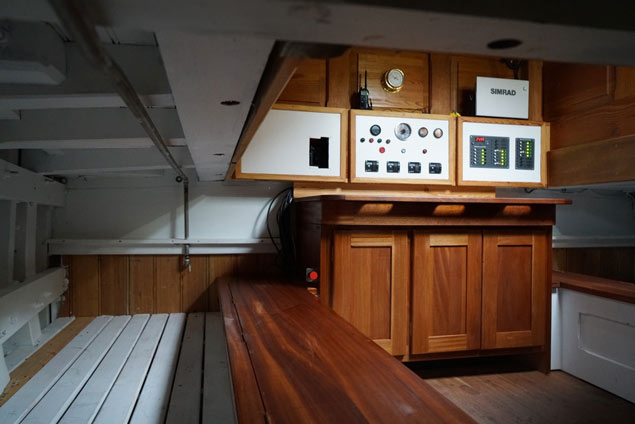
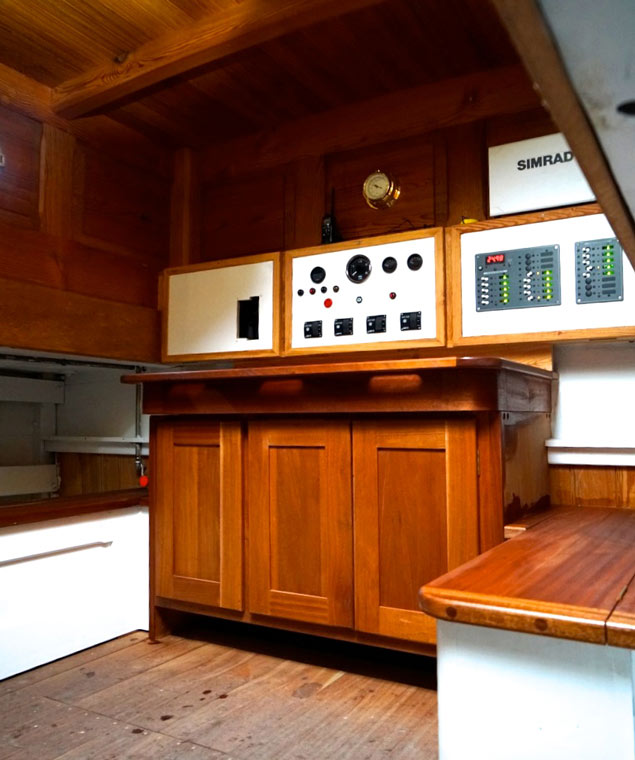
Jim and his group have now moved on to the completion of the main saloon-cum-classroom, which will be both comfortable and functional, for Ilen in her new life will have many roles.
To fulfil many of them, her crew will need to be confident of their handling abilities when berthing a boat with what could well be the longest bowsprit in Ireland. In fact, it sticks out so far ahead of the vertical stem that it has been seriously suggested they should think of installing a camera in its outer end to send a continuous transmission back to a little screen at the steering wheel, because it must be nearly 70ft from one to the other, and there’s lots of nautical paraphernalia in between.
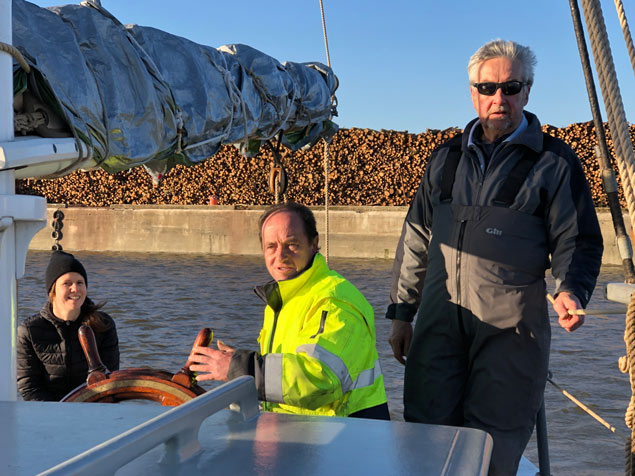 Close concentration for trainee helmsman James Madigan under the experienced guidance of Captain Gerry Burns (right) with Ilen Project supporter Chelsea Canavan (left) of the Hunt Museum enjoying a day n the water. Photo: Gary MacMahon
Close concentration for trainee helmsman James Madigan under the experienced guidance of Captain Gerry Burns (right) with Ilen Project supporter Chelsea Canavan (left) of the Hunt Museum enjoying a day n the water. Photo: Gary MacMahon
Be that as it may, last weekend Project Leader Gary MacMahon and his team had the benefit of guidance from Captain Gerry Burns, one of the most experienced seafarers and ship-handlers in Ireland. In fact, if you were to list the best people in the country for this particular piece of instruction, Gerry Burns would almost invariably come out on top of every list, for his experience ranges from fishing boats and yachts of all sizes right through to the largest ferries, while he was also a key member of Asgard II’s roster of reserve skippers.
For training in handling Ilen and bringing her alongside in challenging circumstances, much was learned, for as Ilen was designed to draw only 3ft forward in order to facilitate coming safely in on Falklands beaches on little islands which lacked even the most basic quay, it means that in cross-winds her head will very quickly be blown off course.
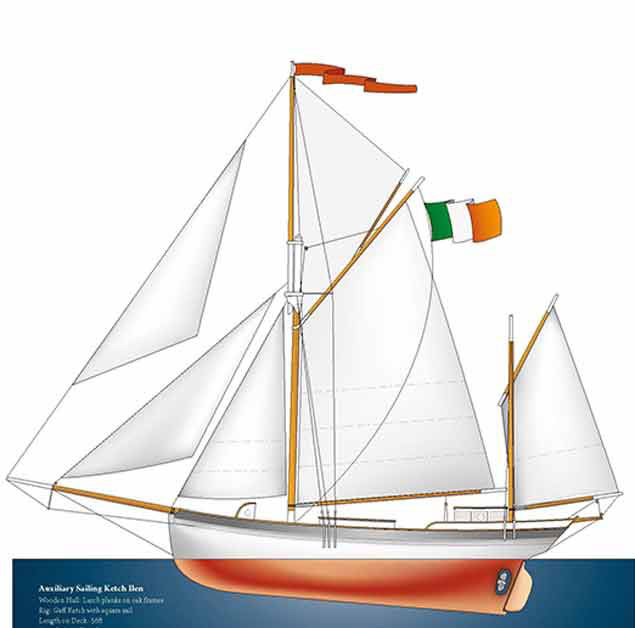 Ilen’s beach-friendly profile inevitably means that the bow is very easily blown to lee at slow speeds in cross-winds, and part of the special skill in handling her is knowing how to anticipate this and deal with it
Ilen’s beach-friendly profile inevitably means that the bow is very easily blown to lee at slow speeds in cross-winds, and part of the special skill in handling her is knowing how to anticipate this and deal with it
They’ve learned all sorts of tricks such as the value of approaching tricky berths in astern. With her 150 hp Gardiner diesel and enormous three-blade prop, Ilen doesn’t mess about when you give her a bit of welly in astern - the bow will very quickly fall into line, and there’s the bonus that you have a much clearer view of where you’re going, but it’s a technique which needs confidence and competence.
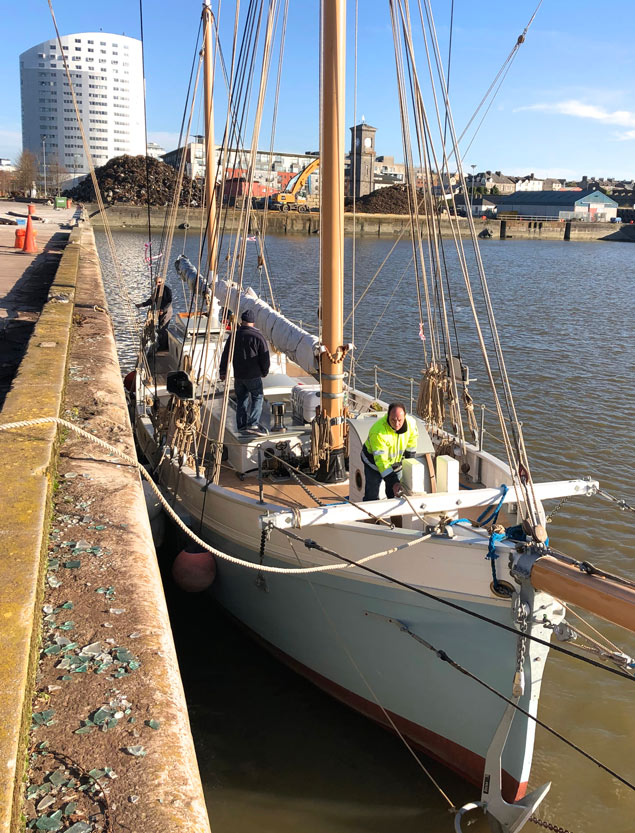 “If you can walk away from it, then it’s a landing…..” The rough humour of aviation was not needed with Sunday’s readily-available and neatly-accessed quayside space in Limerick, giving Ilen plenty of different berths to test the skills of trainee helmsmen. Photo: Gary MacMahon
“If you can walk away from it, then it’s a landing…..” The rough humour of aviation was not needed with Sunday’s readily-available and neatly-accessed quayside space in Limerick, giving Ilen plenty of different berths to test the skills of trainee helmsmen. Photo: Gary MacMahon
That and all other aspects of ship-handling in restricted places only comes from instruction and training and practice and practice again and then practice yet again and again with the best teacher you can find, and with Gerry Burns enthusiastically sharing the sea training and awareness ideals of the Ilen Project, they’d the best man for the job amongst the moving mountains of the Ted Russell Dock.
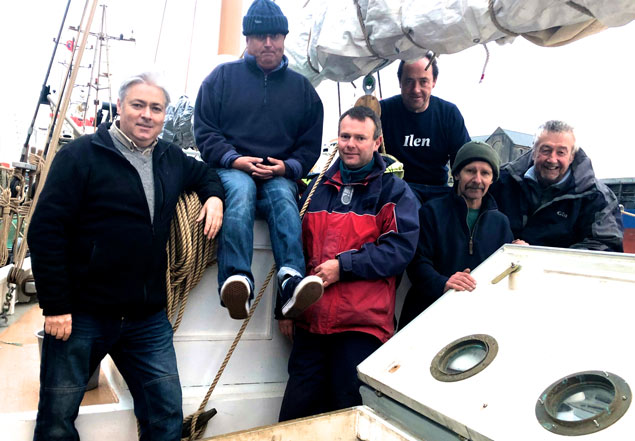 At the end of a good day’s work are (left to right) Gary Mac Mahon, Eoin Mac Mahon, James Lyons of Sailing Into Wellness, James Madigan, Tony Daly and Captain Gerry Burns
At the end of a good day’s work are (left to right) Gary Mac Mahon, Eoin Mac Mahon, James Lyons of Sailing Into Wellness, James Madigan, Tony Daly and Captain Gerry Burns




























